Adata’s SSD does not break world records, but its speed is not bad and it is a good value for money. However, not all of its values are reassuring.
14,000 MB/s – this is the speed you can expect from today’s most modern Solid State Drives, so the fact that the XPG Gammix S60 advertises only 5 GB/s seems quite meager. However, this does not mean that Adata is trying to sell you an outdated data storage with cool graphics and a red-haired anime girl. The reality is that the S60 is an affordable mid-range speed drive, but not yet a PCIe 5.0 drive, meaning it connects to the system on the previous PCIe 4.0. We will show why this is not a problem in our test, as well as why you should put the S60 on your shopping list.
Proven foundations
Quite a few SSD manufacturers have a habit that when they create a new product, its capabilities are determined by its guaranteed parameters, not by what chips it is built on. This is exactly the situation with the mid-range model launched in 2024 XPG Gammix S60whose 1 TB capacity version Adata guarantees a reading speed of 5000 MB/s and a writing speed of 3200 MB/s sequentially. This value takes it into the world of mid-range PCIe 4.0 models, i.e. it is not entry-level, 1800-3000 MB/s, but also not the 7000-7300 MB/s available on PCIe 4.0.
A separate placard on the red box also announces that it is a DIY component, which of course cannot be too complicated in the case of a 22×80 mm PCB board. In our case, we are talking about the fact that you have to glue the approximately 1 mm thick metal cooling plate (“cooling fin”) at home – of course, only if you absolutely require it. Because in the case of most motherboards, the motherboard manufacturer already solves the cooling of the M.2 SSDs, and the thermal pad is also pre-glued. However, when installing it in a notebook, it is worth sticking it on, the control chip in particular needs a lot of cooling. Since the heat pad with an adhesive surface is also in this case factory-installed on the cooling plate, this operation does not take more than 5 seconds.
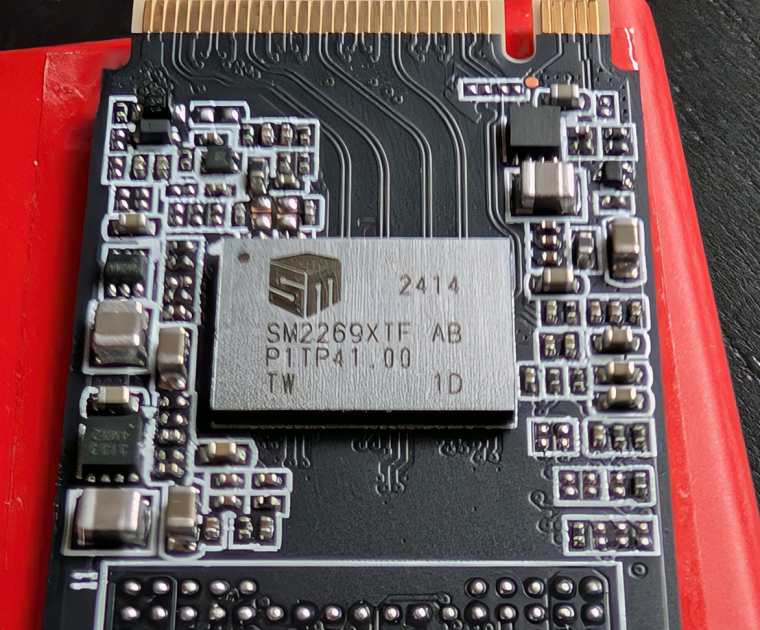
The 1 TB version of the XPG Gammix S60, which is also available in Hungary in three capacities, 512 GB, 1 TB and 2 TB, has arrived in our test lab. After researching it in Internet SSD databases, it immediately turned out that it was not one of the first generation copies, because over the months this type was equipped with different controllers and 3D NAND TLC flash chips. The first one was initially a Phison E21T, but it’s now with us Silicon Motion SM2269XT the SSD came with a control chip, and the NAND flash chips were supplied by Micron (the other version has SK Hynix chips). In the case of the latter, the investigation is not easy, because the manufacturer applies the ADATA label uniformly to all NAND chips, but the controller is not covered by a heatsink by default.

Being a mid-range SSD, it is not surprising that the controller cannot manage dedicated DRAM, the manufacturer solved the caching in the usual cost-saving way, that is, part of the TLC-organized NAND chip temporarily stores data in SLC organization. It conforms to the M.2 2280 standard Gammix S60 SSDthere are only two NAND flash chips (each with a capacity of 512 GB), that is, we can speak of a single-sided design, which is beneficial in terms of cooling. In addition to the PCI Express 4.0 x4 connection, the drive uses the NVMe 1.4 protocol, there is no RGB lighting, and there is no emergency data backup in case of power loss. However, it has essential TRIM and SMART, supports the TCG Opal 2.0 data security standard, and thanks to the 5 GB/s speed, official Sony PlayStation 5 compatibility is also available.
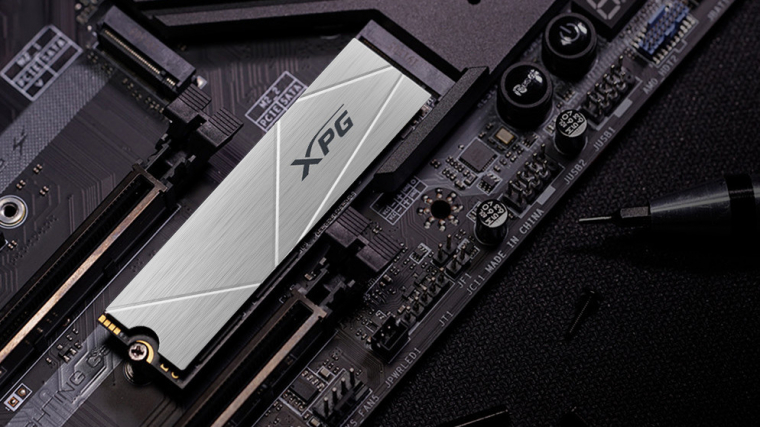
Stable performance
According to the factory values, the maximum speed of the 1 TB (actual storage: 953.85 GB) Gammix S60 SSD is 5 GB/s for reading and 3.2 GB/s for writing (the 2 TB model is 4.2 GB/s capable of writing pace). From the control side, this can theoretically be associated with up to 900K IOPS, which means that the storage should also handle smaller files well, but the durability does not look too promising: the manufacturer promises 250 TBW, which is low compared to the competition (Samsung 980: 600 TBW, Kingston Fury Renegade 800 TBW), but of course if we look at it realistically, this is during normal use at home during 5-8 years shouldn’t be a problem either.
Before installation and formatting, we installed the cooling plate, and then measured the heat production in a normal desktop PC environment. During formatting, the temperature rose to 79 degrees Celius, which is extremely high, competitors perform at around 70 degrees Celsius under similar conditions, which means that cooling is mandatory for the Gammix S60 to avoid throttling (slowing down data transfer due to heating).
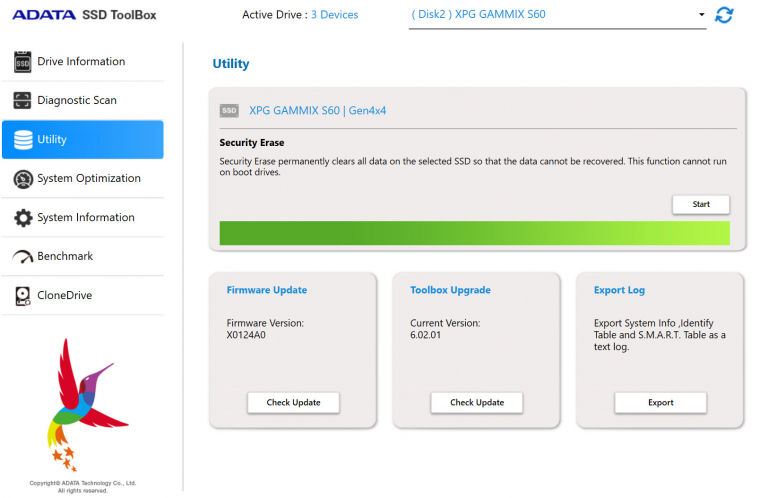
In the sequential data transfer measurements, the S60 performed very well, even remarkably well: we also measured read/write speeds of 5.2/4.8 GB/s, which is above the factory-promised levels. Of course, this was achieved with a 1 GB data package, where the writing result can be significantly distorted by the SLC cache, so – as always – we also performed the test with a 32 GB data package. Here we got a much more realistic picture: the reading remained at around 5 GB/s, but the average writing speed decreased to 2.1 GB/s. A full, linear write with AIDA64 showed perfectly why the difference is so large: the SLC cache lasts until 40-50 GB, then it becomes saturated, so the controller is forced to insert NAND TLC write cycles. So, if you copy a lot of large files to SSD every day, the Gammix S60 will not be the right choice.
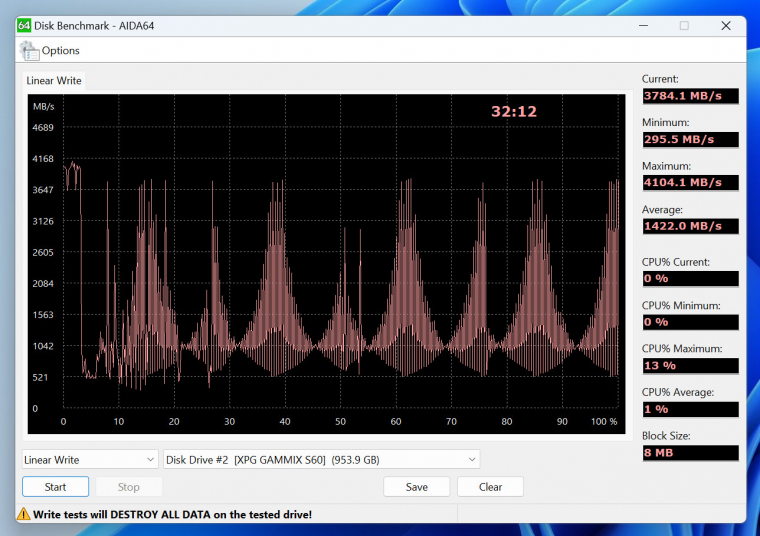
We got a similar result with the 4K Random IOPS measurement, where reading yielded the expected value of over 500K in today’s mid-range, but writing was only 241K, which is regrettably low. In mixed use, in a real environment, this is mostly felt as the SSD slows down quickly when moving and writing large files, you have to wait for it, but it provides excellent performance when reading.
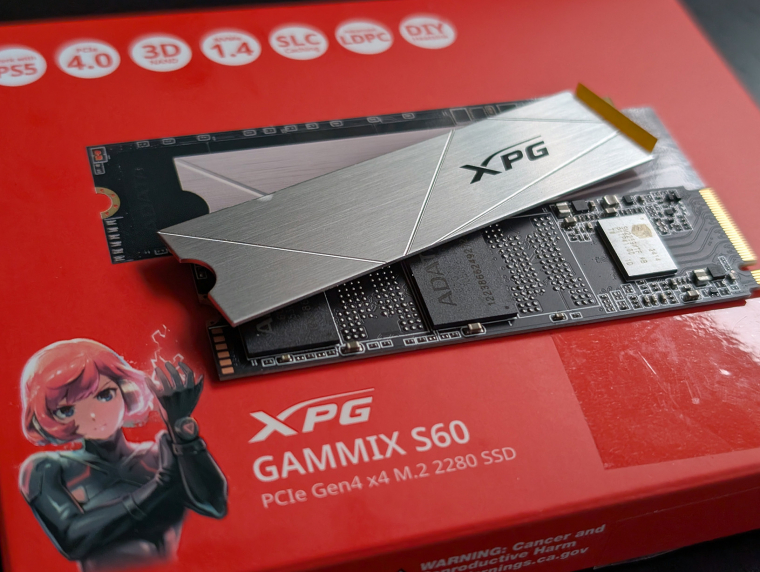
Killer competition
As we promised – and as we suspected – the XPG Gammix S60 did not break our test lab records, but we did not expect this from this affordable model either. We managed to prove the values promised by the manufacturer with measurements, that is, there is no need to worry if the control chip or the NAND flash changes – the speed is guaranteed. This is certainly true for reading, here even the factory value was slightly exceeded, but the promised writing speed can only be achieved if you do not write too large files to it and not too often. During the speed measurements, the SLC NAND virtual cache did its job well up to 45-50 GB of data, after which the writing speed only dropped.
The heating may seem a bit scary: during formatting, the Gammix S60 heated up to 79 degrees Celius, even with the cooling plate installed before testing. Of course, this is extreme use, the SSD does not heat up that much during normal use, but this also shows that the Gammix S60 must be cooled in a desktop PC, PS5 and notebook as well.
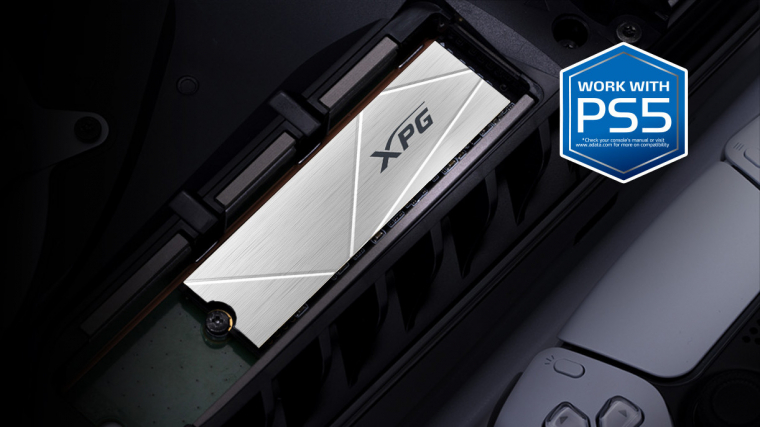
For management, you also get an SSD ToolBox utility, which is transparent and easy to use, it is recommended to install it under Windows. The mid-range speed is not so painfully bad news, because the manufacturer does not even promise a top speed (the S70/S110 Pro pairs for that), but 250 TBW seems to be sufficient for average use anyway, but it is really very little. We highlight this only because the XPG Gammix S60 is certainly not in an easy situation.
Although Adata’s SSD is one of the cheapest 1 TB PCIe 4.0 models, which offers a speed of 5 GB/s, for HUF 2-3 thousand more expensive, two very strong competitors take the wind out of their sails. One is the slightly slower, but reliable and durable Samsung 980, and the faster Kingston Fury Renegade SSD with sequential speeds of up to 7 GB/s, which also offers 800 TBW. However, the real killer of the S60 is the recently launched Kingston NV3, which at the time of our test was available for HUF 26,000 and although it does not have a cooling plate, it is faster than the Gammix S60 in almost every respect. Despite this, Adata is not a bad choice, in fact, if you can get it for less than 29,000 forints (it was sold for 24,000 forints for a while in July), it can be a good buy, as it is reliable and offers good performance, the cooling plate that can be attached afterwards is beneficial, the auxiliary software is useful and by the way, Adata gives it a 5-year warranty.
Source: www.pcwplus.hu


